The first church in Irving Park, highway construction in the 1950s just missed the old Irving Park Reformed Church in the 1950s, but the Kennedy Expressway did devour its parsonage. Spared demolition by a few yards, it's technically the oldest church in Irving Park–originally built in 1872 and designed by Henry Rehwoldt, in 1908 the church received an enjoyably idiosyncratic Gothic-Revival-meets-Arts-&-Crafts remodel by Elmer C. Jensen, an expansion described as “the original frame building was covered…by a stone shell”. A concrete (errr...stone-clad) example of how international immigration helps keeps Chicago vibrant, over the last twenty years the building housed a Korean Presbyterian church and is now home to the African Community United Methodist Church, a West African congregation.
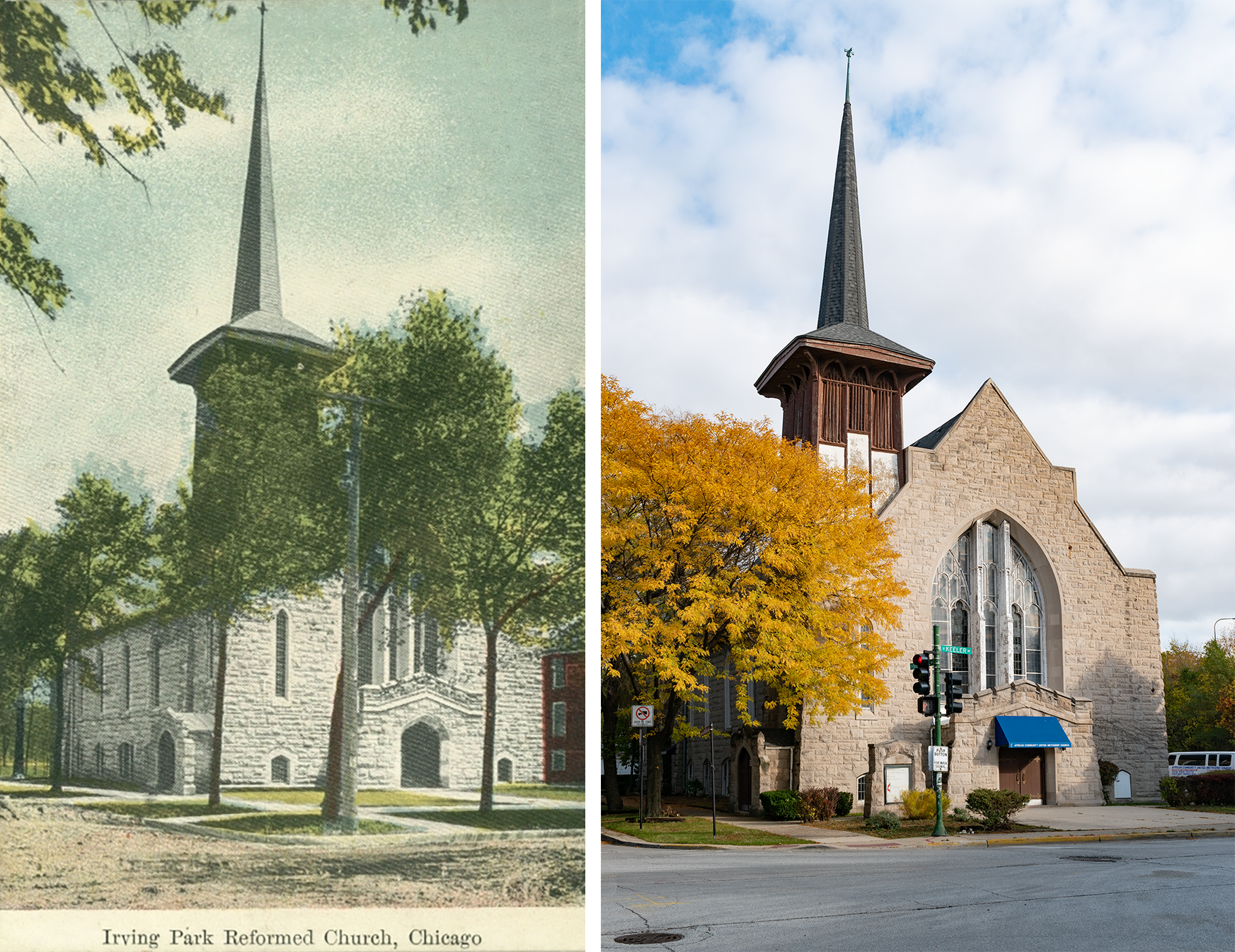
So, what’s changed? From this exact angle…basically nothing. Sure, there’s a new sign in front, an awning, the building to the south is gone, and it looks like the city widened Keeler Ave. at some point, but the church building itself looks basically unchanged from 1908. Now, zoom out just a bit and…

...yeah. But still! Three different congregations have lovingly stewarded this church building over the last 152 years, even if the city, state, and federal governments joined forces to annihilate its surroundings.
This is a neat one because it combines the efforts of two of the neighborhood's more influential architects, a fusion of 1870s and 1900s Irving Park. Henry Rehwoldt arrived in Chicago in the 1860s–impeccable timing, a builder landing in a boomtown. Rehwoldt designed churches, civic buildings, and commercial blocks, as well as a bunch of stately homes in the then-suburb of Irving Park (Chicago annexed it in 1889). Working with (and against–they sued each other at least once) Irving Park developer Charles T. Race, at least a few houses designed by Rehwoldt still stand around Irving Park, including 3828 N. Keeler.
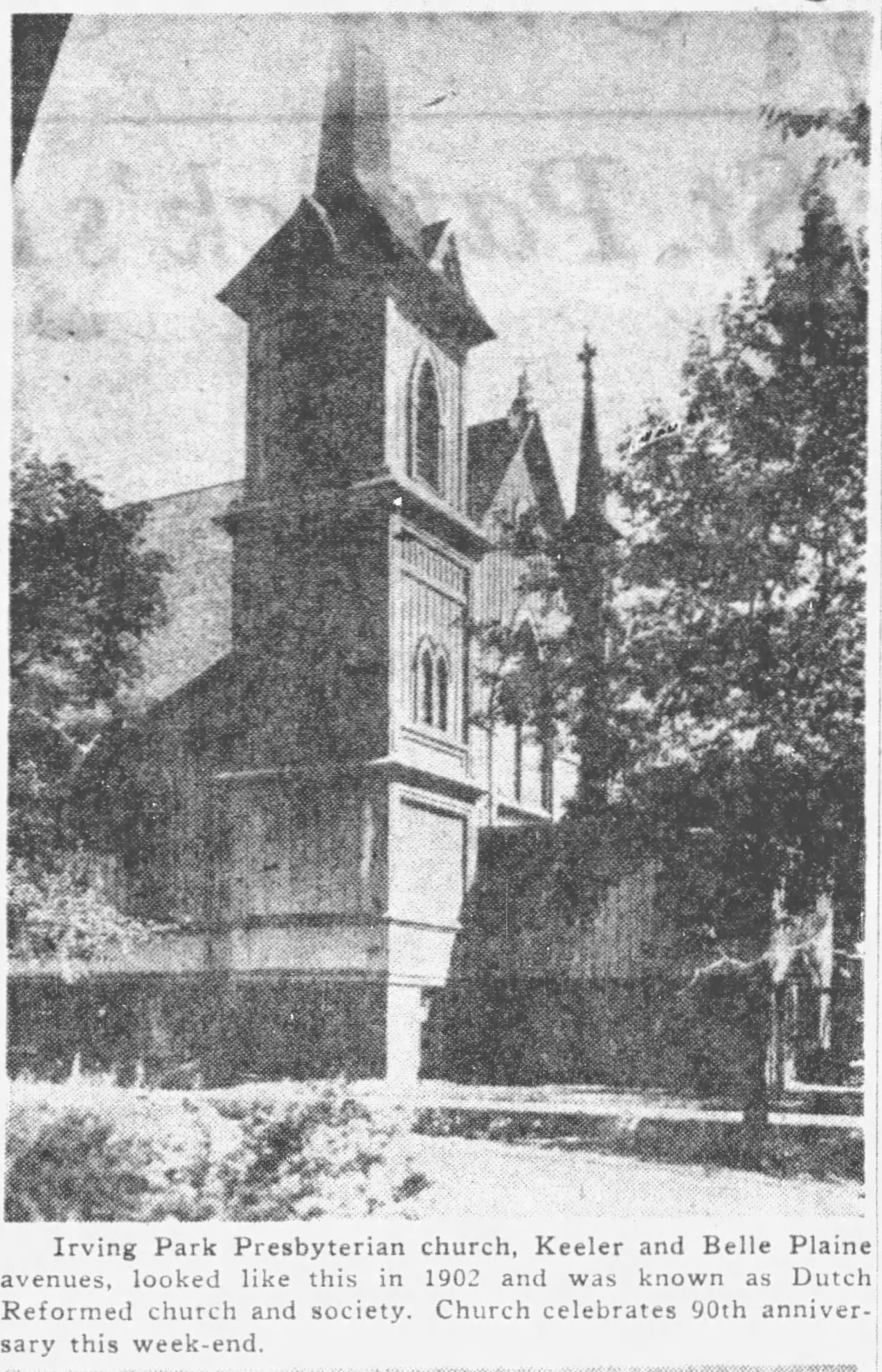
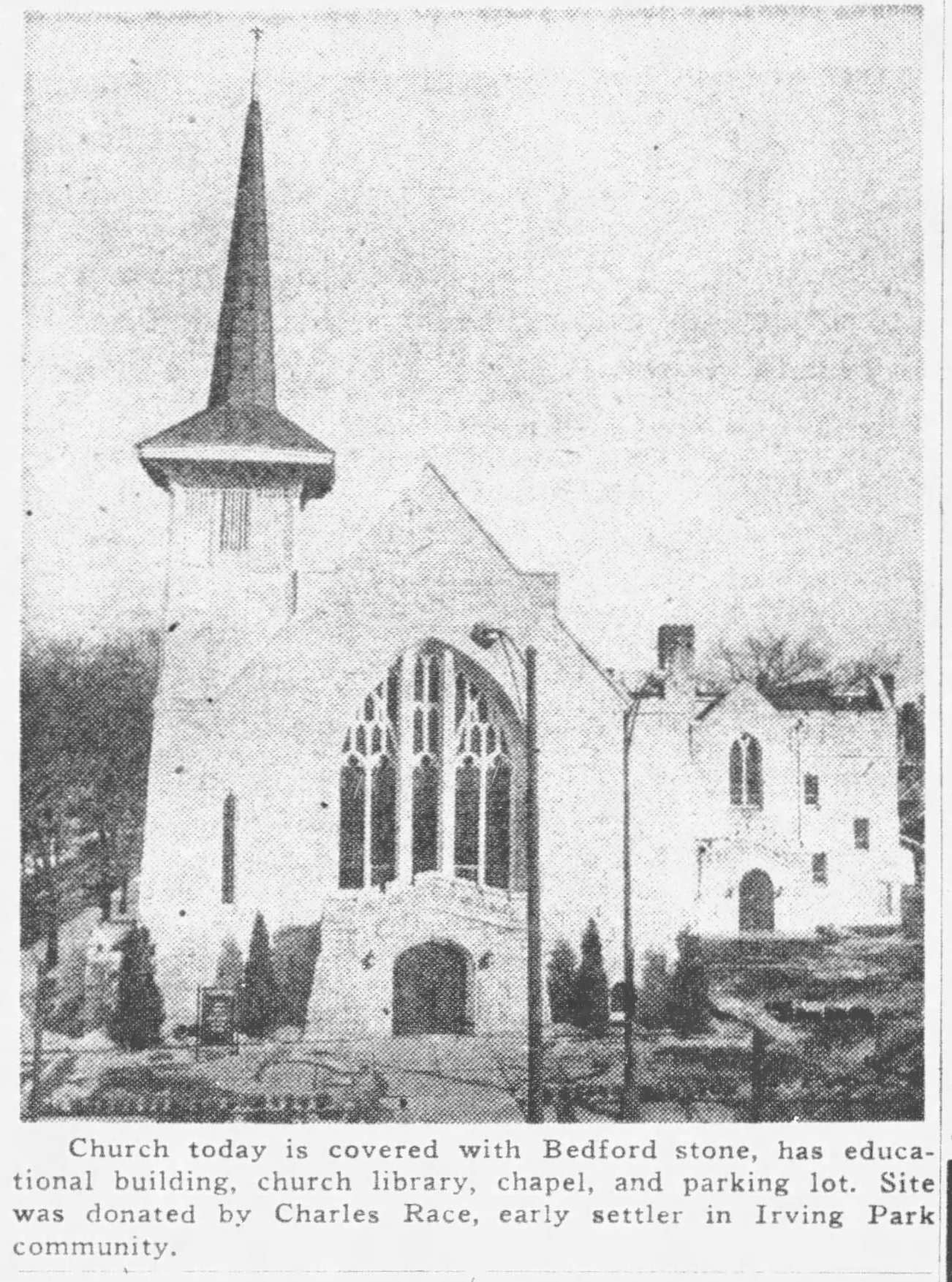
Rehwoldt's wood-frame church in 1902 | Jensen's stone church, 1962
Thirty years later, Elmer C. Jensen was one of the neighborhood’s preferred architects. He was a protege of William LeBaron Jenney, the father of the modern skyscraper–Jensen's first job was carrying blueprints from Jenney's office to the construction site of the Home Insurance Building (the first modern steel-frame high-rise). Eventually rising to partner at Jenney & Mundie, Elmer had a long, productive career at Mundie & Jensen designing homes, churches, and commercial buildings in Chicago’s northern neighborhoods. Maybe even more than for his architectural work, Elmer C. Jensen was known for his instrumental social, organizational, and archival role within Chicago’s architectural community–he was nicknamed the Dean of Chicago architects. Like Rehwoldt, Jensen designed a clutch of houses in Irving Park, including his own. Looking at his body of work, this church may actually be one of the most interesting things he did over an exceptionally long career.
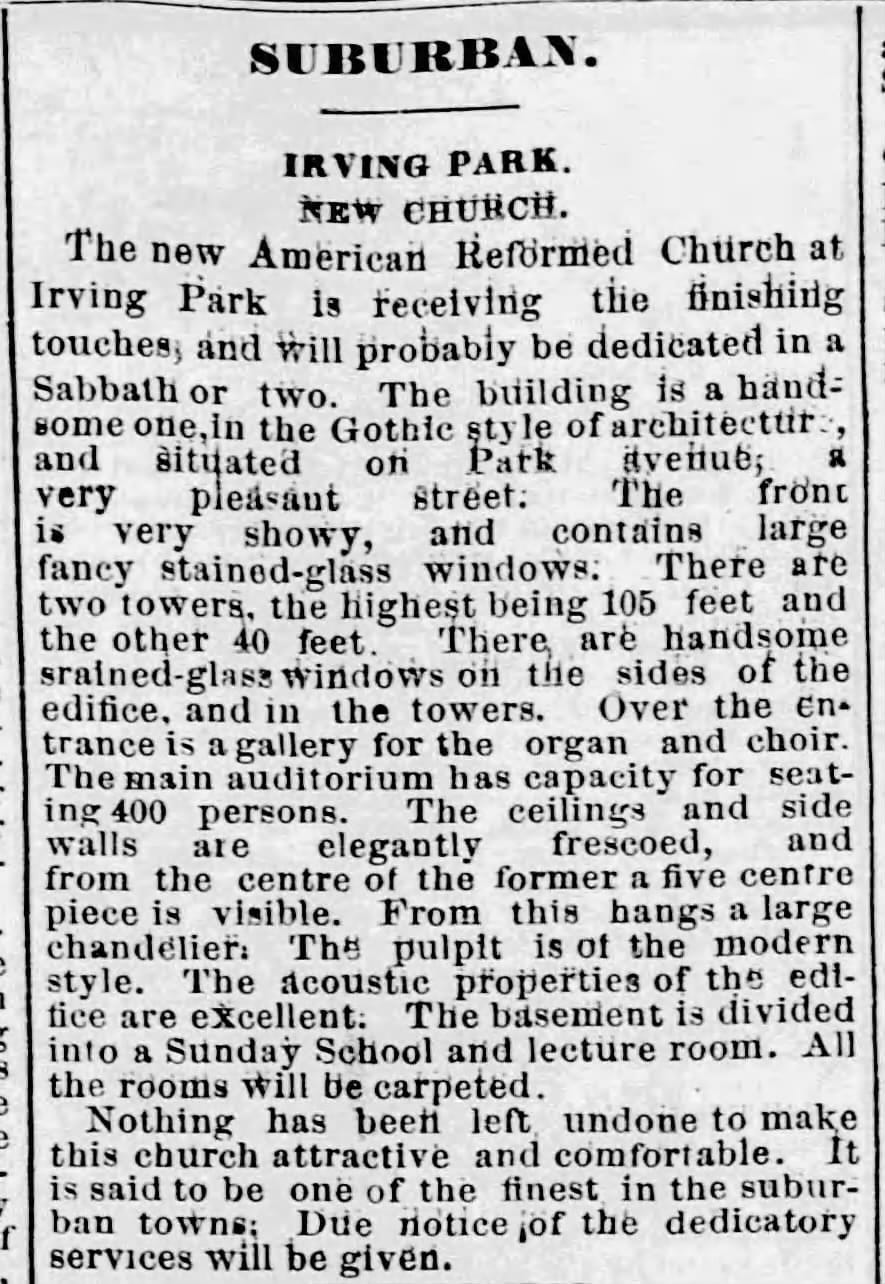
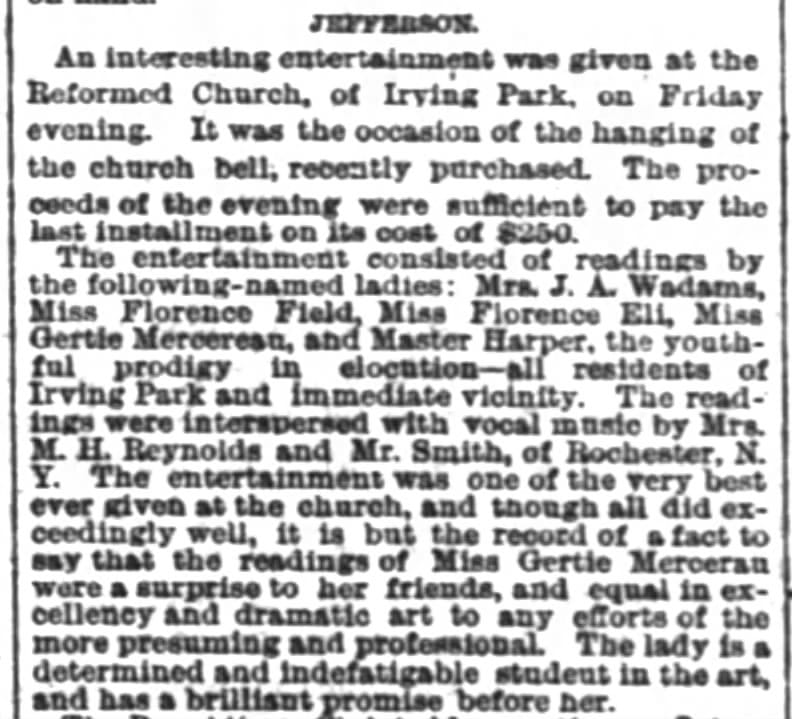
1872 article on the church's construction | 1880 article on the installation of the church bell
Formed as an American Reformed church just days after the Great Chicago Fire, the Irving Park Reformed Church had a loosely Dutch character, although an 1874 book on Chicago’s suburbs described it as “denomination doubtful” with “no nucleus of a denominational organization”. That denominational vagueness likely stemmed from its initial position as Irving Park’s only church–hard to be too doctrinaire when you’re the church for the whole town. Early pastors included A.T. Gulick, A.G. Lansing, A.H. Van Vranken, Jesse W. Brooks, and Frederick P. Baker, and the church was deeply involved in the temperance movement.
Growing alongside the neighborhood, in 1908 the church hired Jensen to expand their building, tasking him with solving “the problem of transmuting a wooden building into one of stone”. Cost savings presumably drove the decision to build around the old wood frame church, and the Irving Park Reformed Church became an example to other congregations looking to creatively reuse church buildings they’d outgrown.

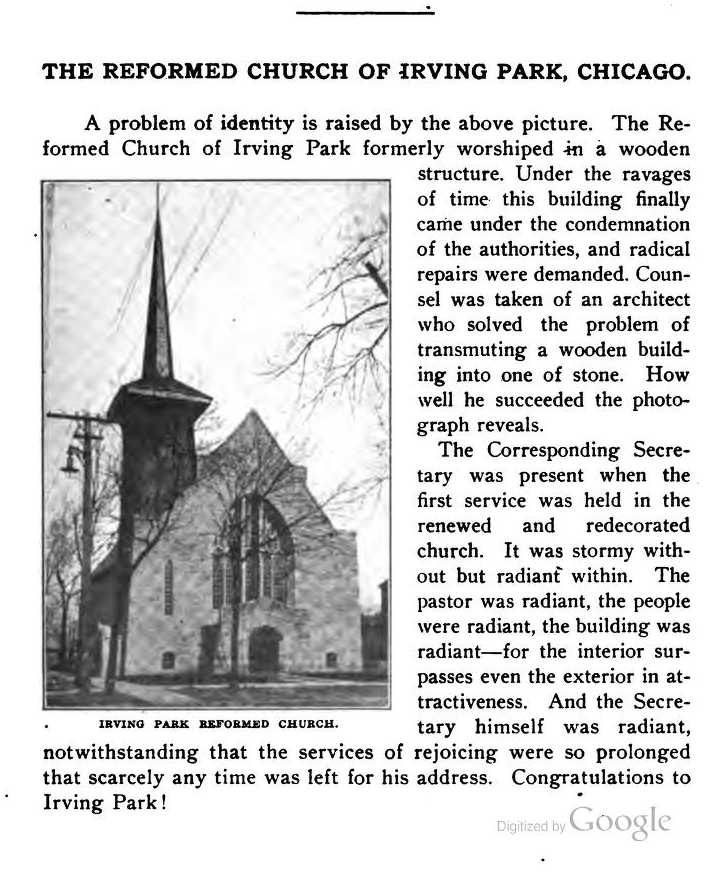
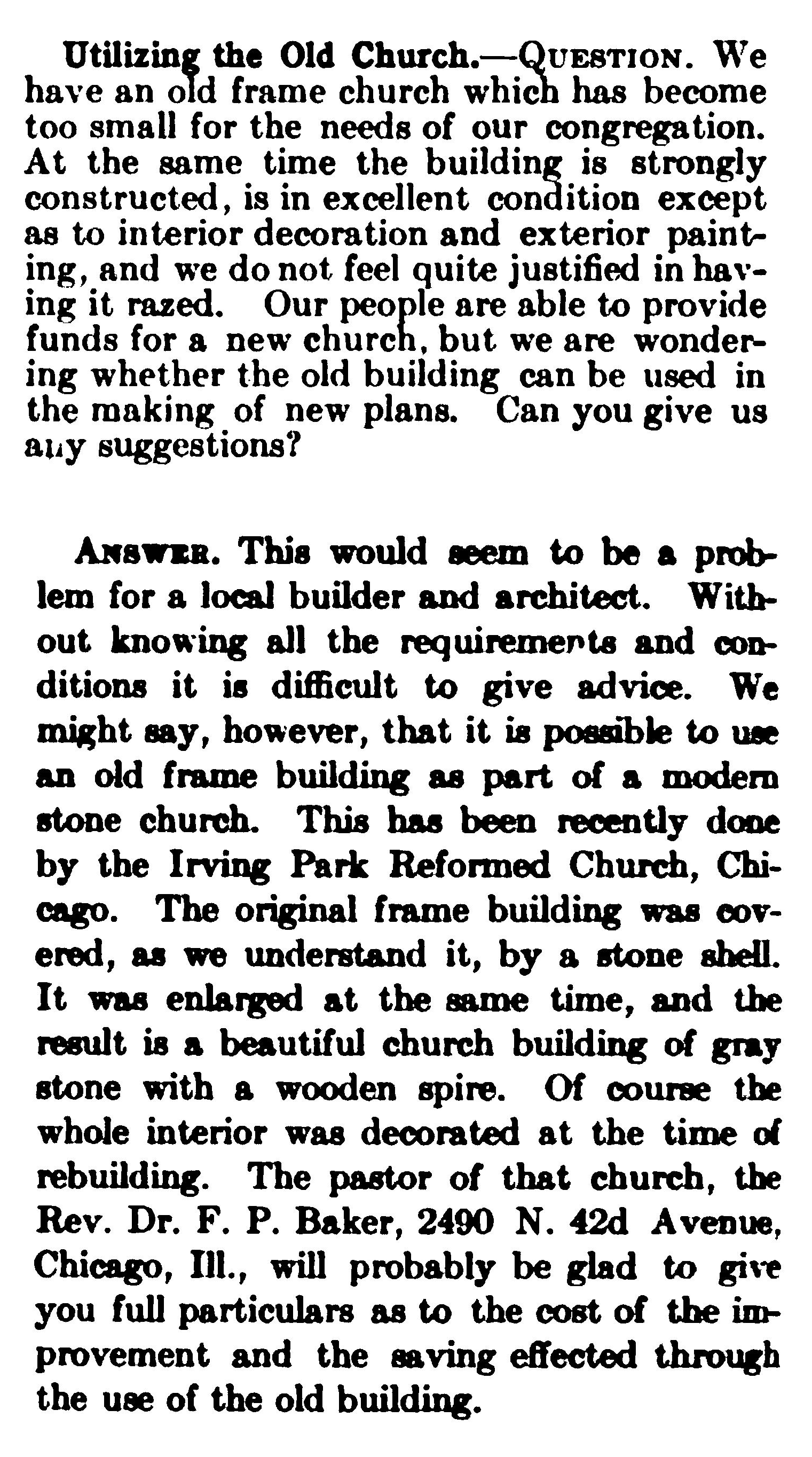
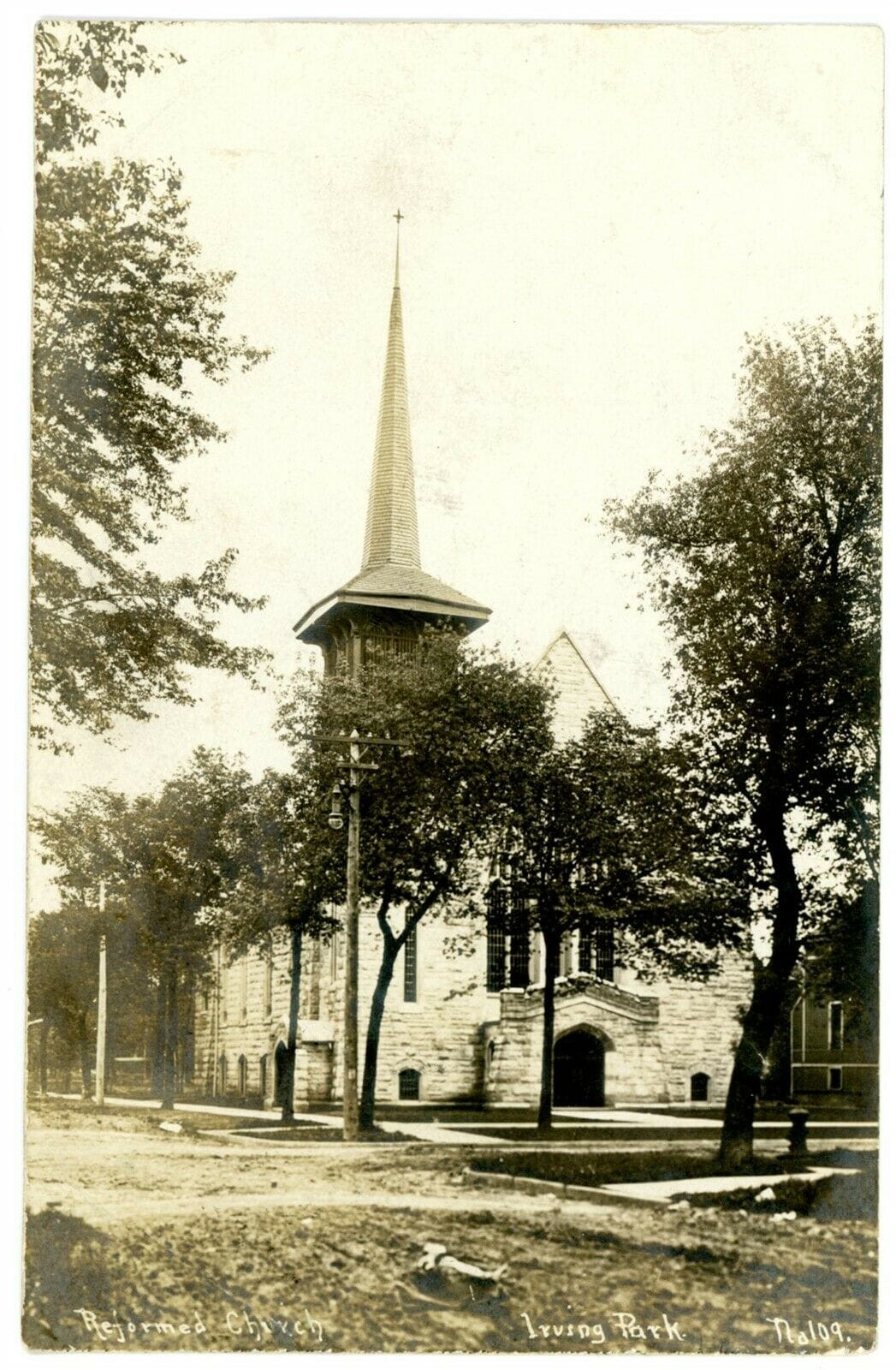
1907 building permit for the remodel, Chicago Building Permits Collection, UIC | 1908 article on the renovation in the Mission Field, the Internet Archive | 1908 article in the Homiletic Review, the Internet Archive | photo via the Northwest Chicago Historical Society
While it maintained a tenuous affiliation to the American Reformed church for its first few decades, in 1913 the 376 members of the church officially severed ties with that denomination, joined the presbytery, and became the Irving Park Presbyterian Church.
The church lost its parsonage to the construction of the Kennedy in 1955, complicating their hunt for a new pastor at the time–they had nowhere for him to live. The clearances for the highway also cut a swathe through Irving Park Presbyterian’s neighborhood and likely immediately displaced parts of the congregation. While the building escaped demolition for the highway, over the longer term the highway suffocated the church anyway–squeezed up against the viaduct, the church was cut off from the southern half of the neighborhood, and began to shrink.
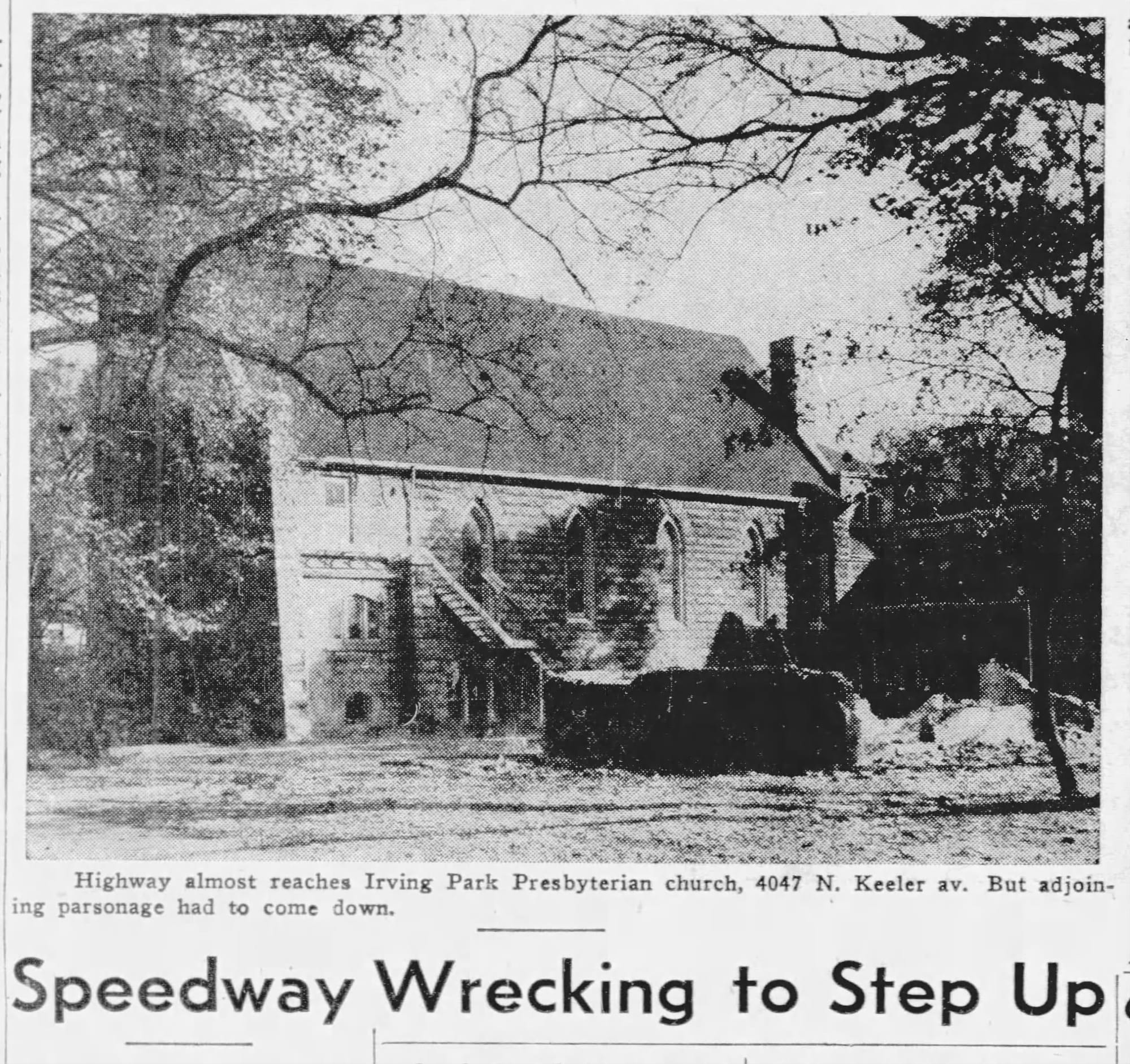
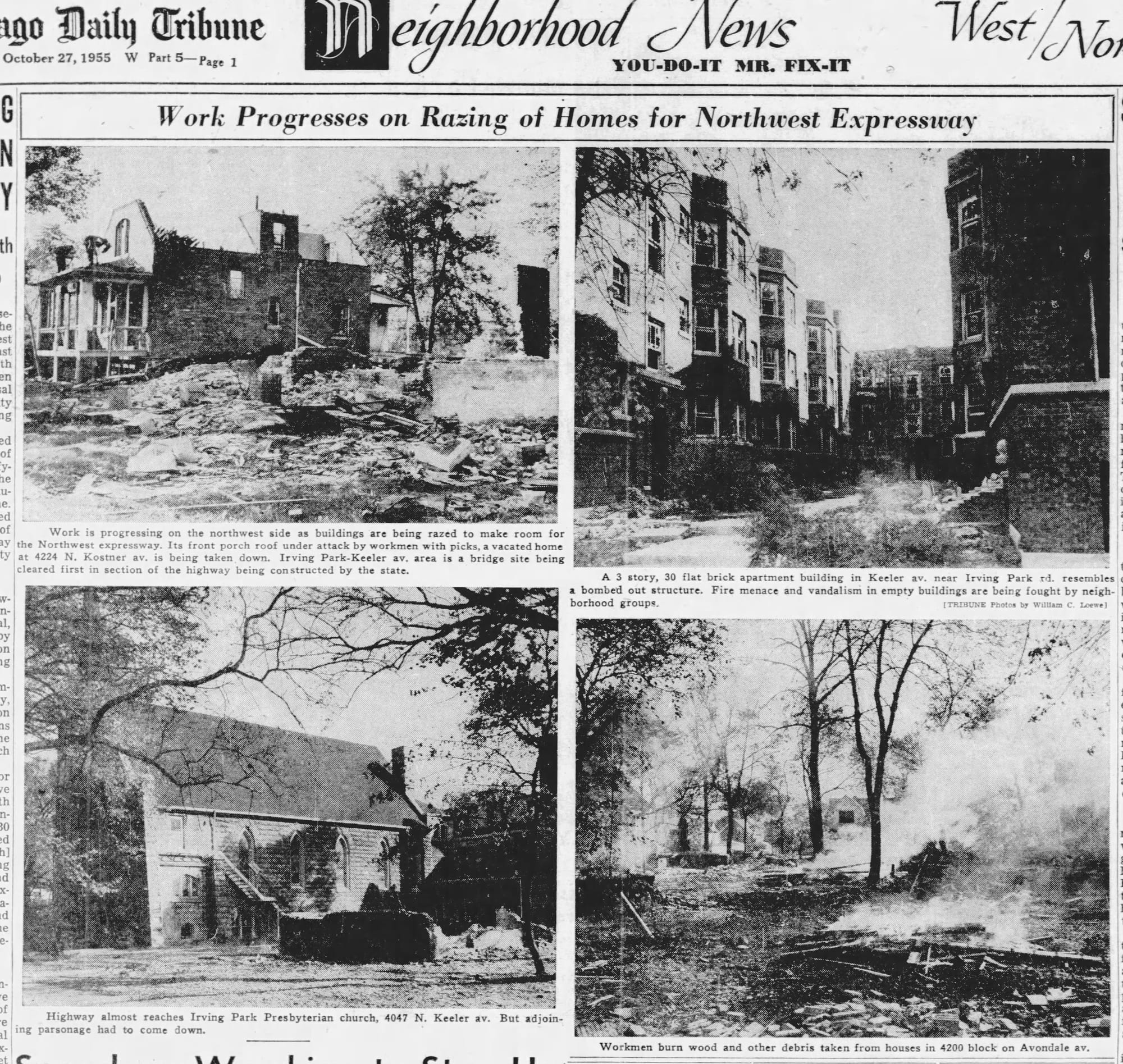

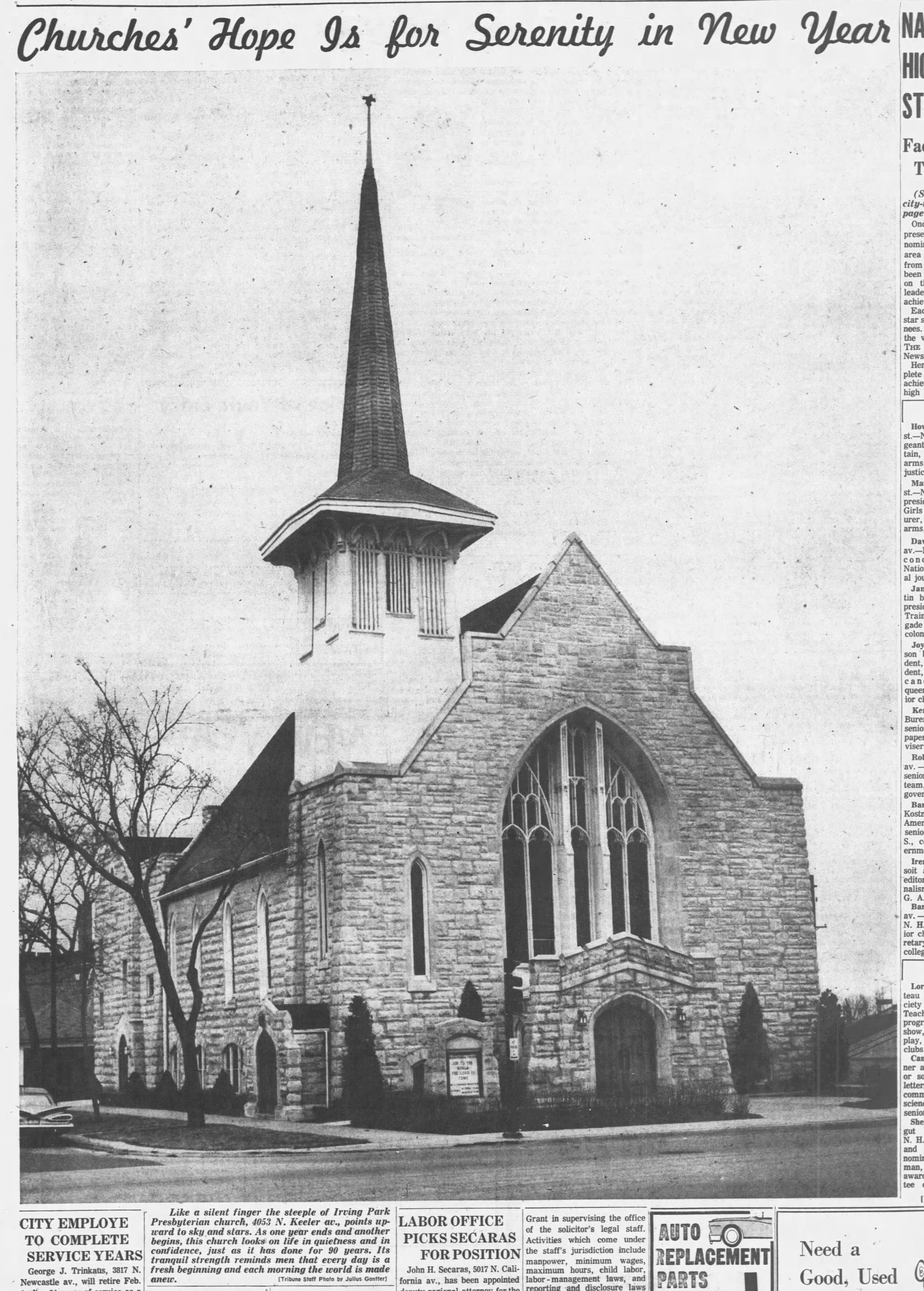
1955 articles and images of the parsonage demolition and clearing the neighborhood for the Kennedy Expressway, as well as the congregation seeking a new home to purchase for the replacement parsonage | Photo in a 1962 article, "Churches' Hope Is For Serenity In New Year"
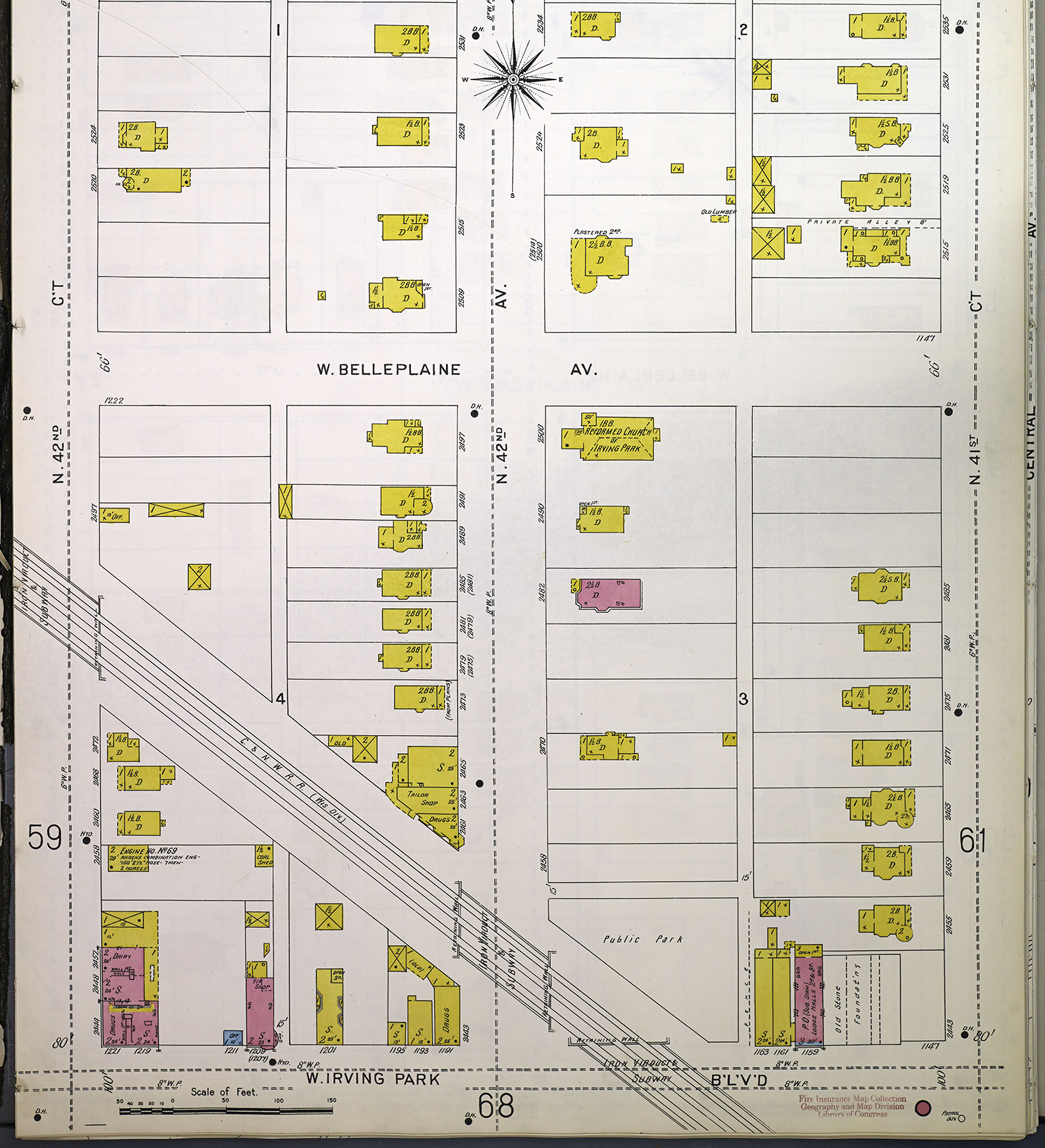
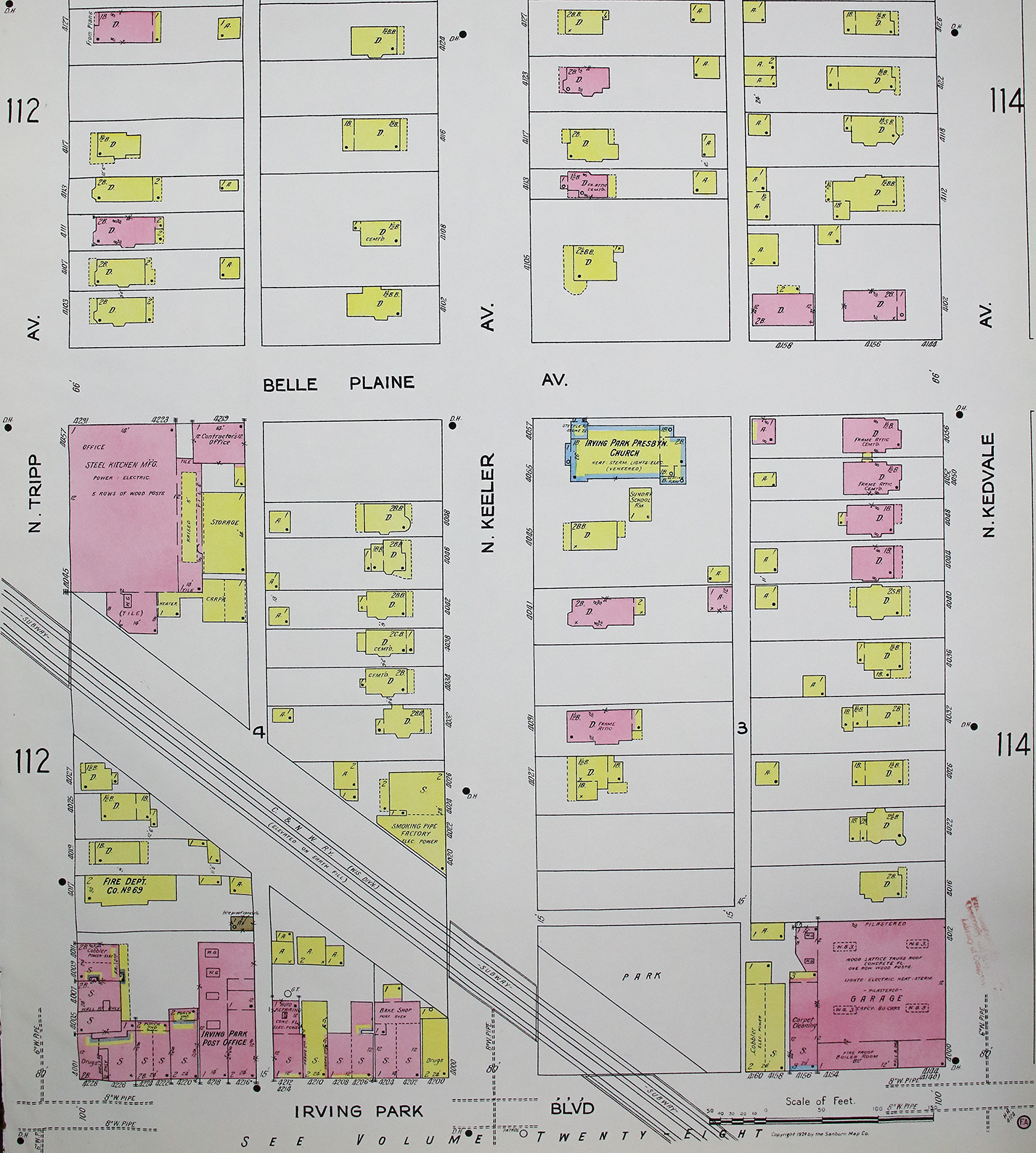
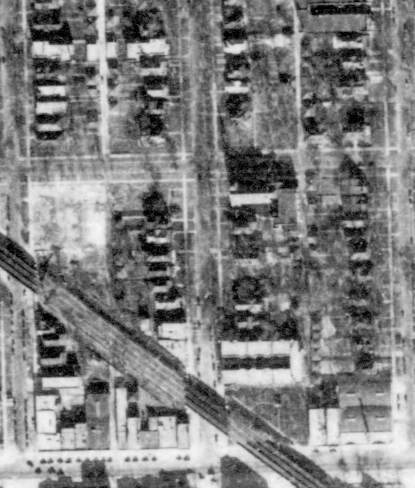
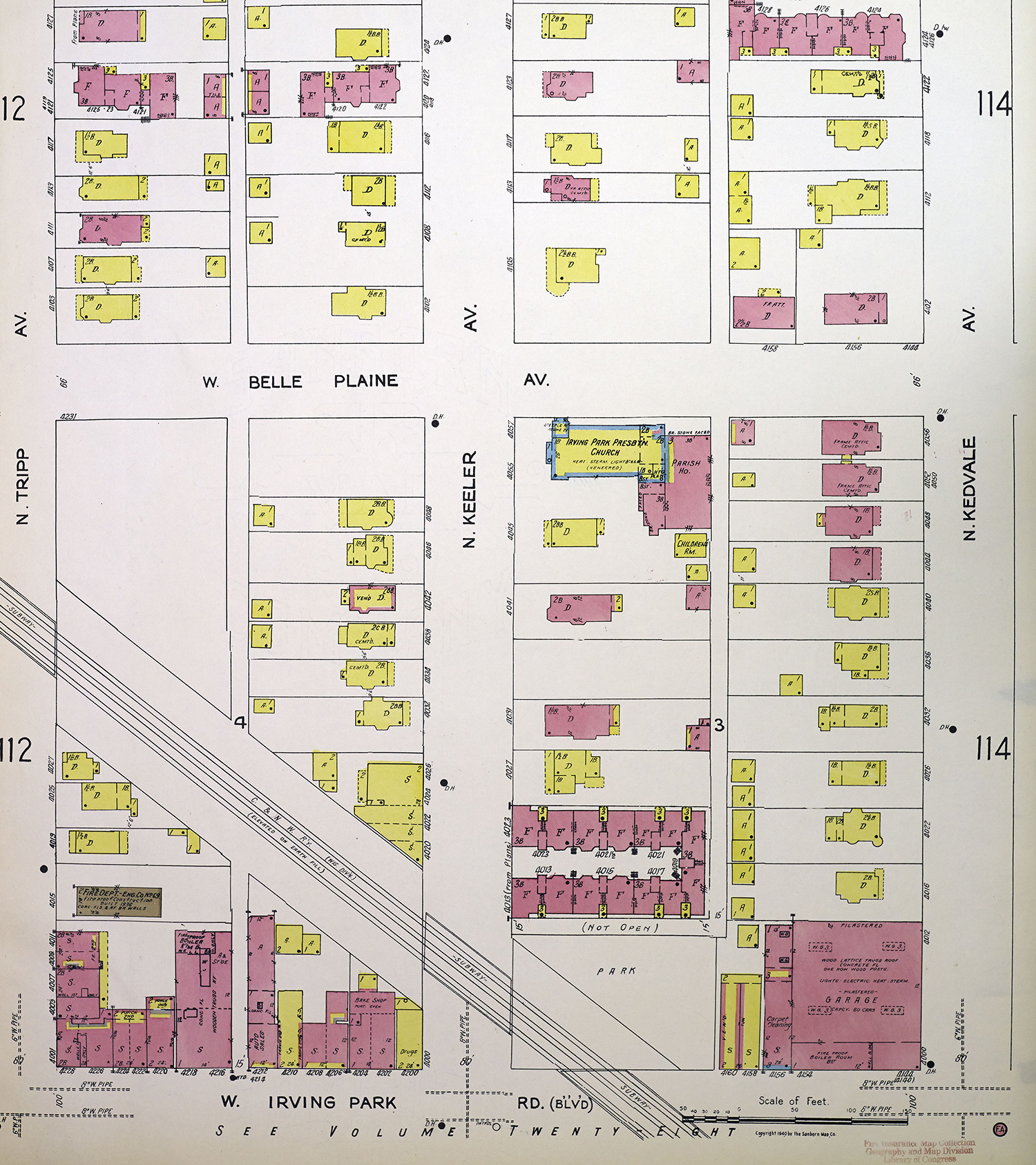
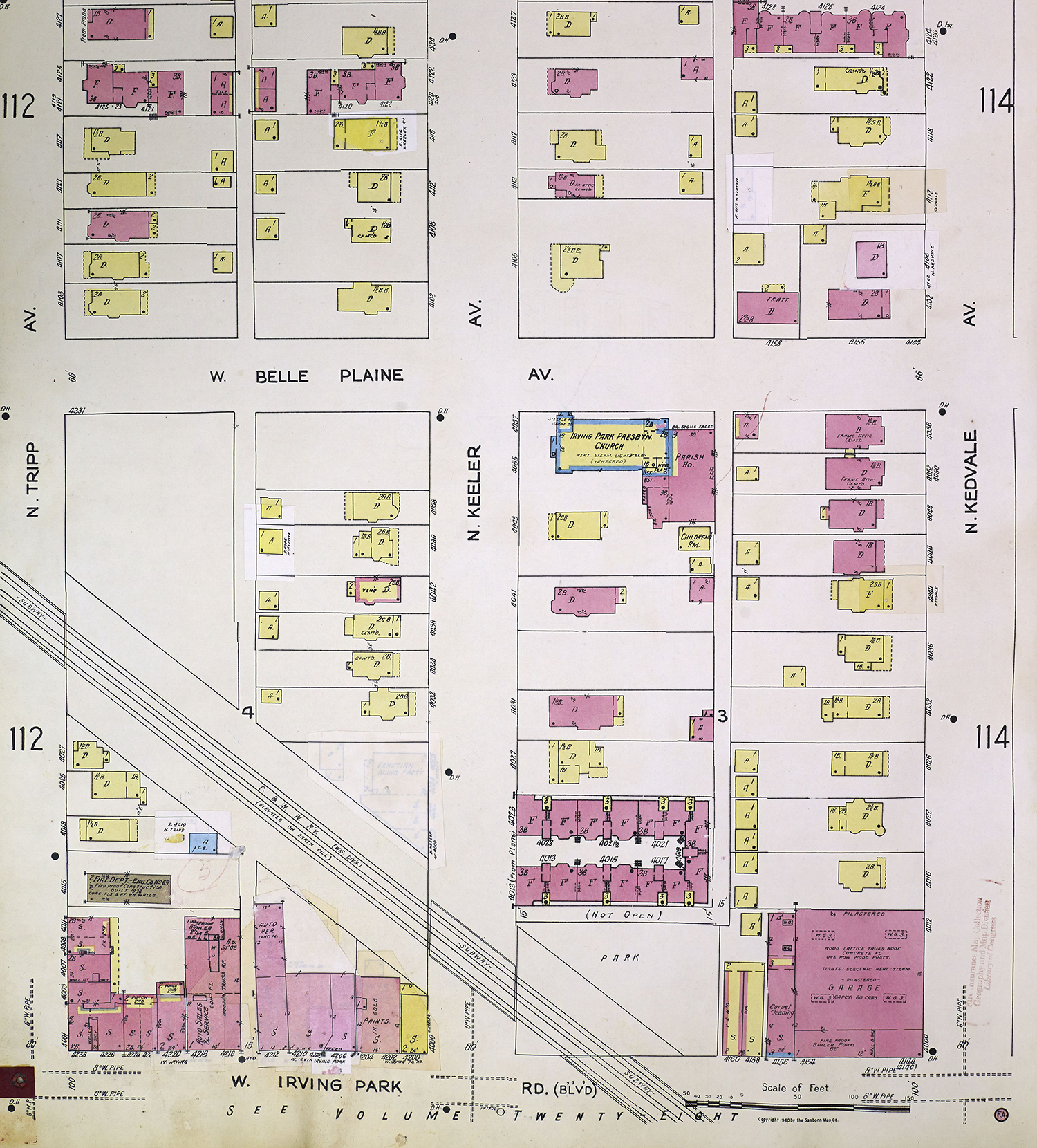
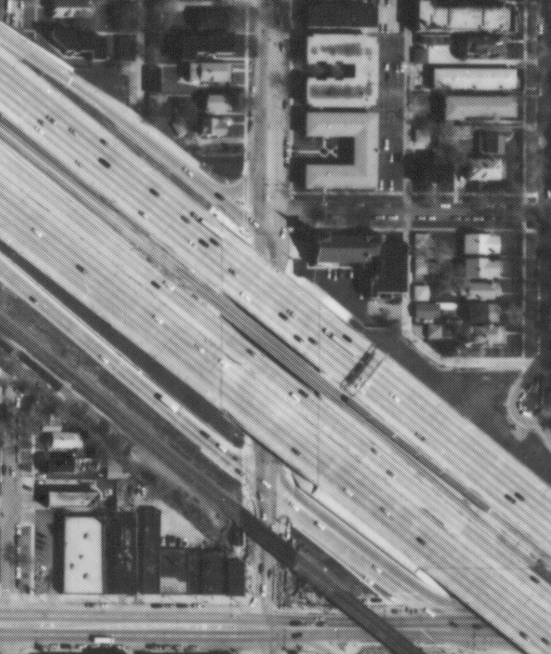
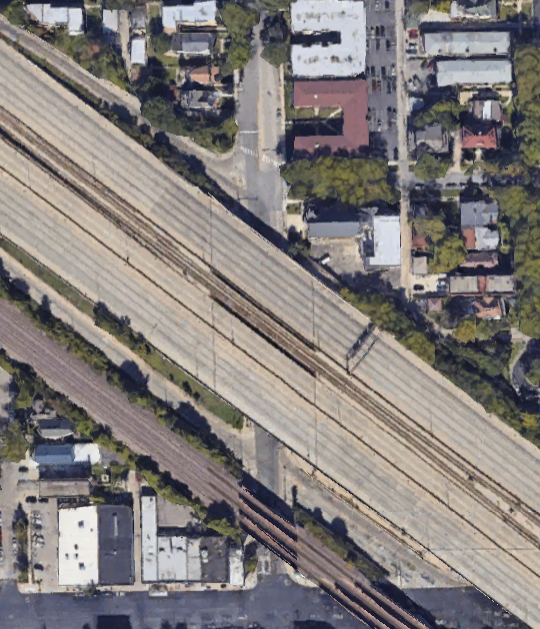
1905 Sanborn map | 1924 Sanborn map | 1938 aerial, Illinois State Geological Survey | 1940 Sanborn map | 1951 Sanborn map | 1995 aerial, Northeastern Illinois Air Photo Archive, CMAP | ~2022, Google Earth
In 2001 the dwindling congregation of the Irving Park Presbyterian Church moved out of their longtime home and merged with the Carter-Westminster United Presbyterian Church. A Korean church, Fullness Presbyterian, moved in for a few years until they decamped to the northwest suburbs, and then an African Methodist congregation moved in. The church’s unique steeple–highly visible just a few feet from the highway–was restored in 2018.
Production Files
Further reading:
- On the history of Irving Park, the Old Irving Park Association
- Suburb into Neighborhood: The Transformation of Urban Identity on Chicago's Periphery: Irving Park as a Case Study, 1870-1910 by Barbara M. Posadas
- There's a good write-up on Elmer C. Jensen in the Chicago Landmark Designation Report for the Mundie & Jensen-designed Consumers Building on State Street (now threatened with demolition because of some whiny federal judges)
- How Chicago’s expressways were born — and furthered segregation
- Church alongside Kennedy Expressway gets a steeple facelift
Keeler Avenue only received that name later–when this church was built it was Irving Avenue, and when Jensen renovated it the street was 42nd Ave.
Architect Henry Rehwoldt was born Heinrich Rehwoldt in 1833 in Lübeck in what was then the Grand Duchy of Mecklenburg-Strelitz. A resident of Irving Park with his office downtown, like most architects active in Chicago in the 1860s and 1870s, the vast majority of Rehwoldt's buildings have been demolished.
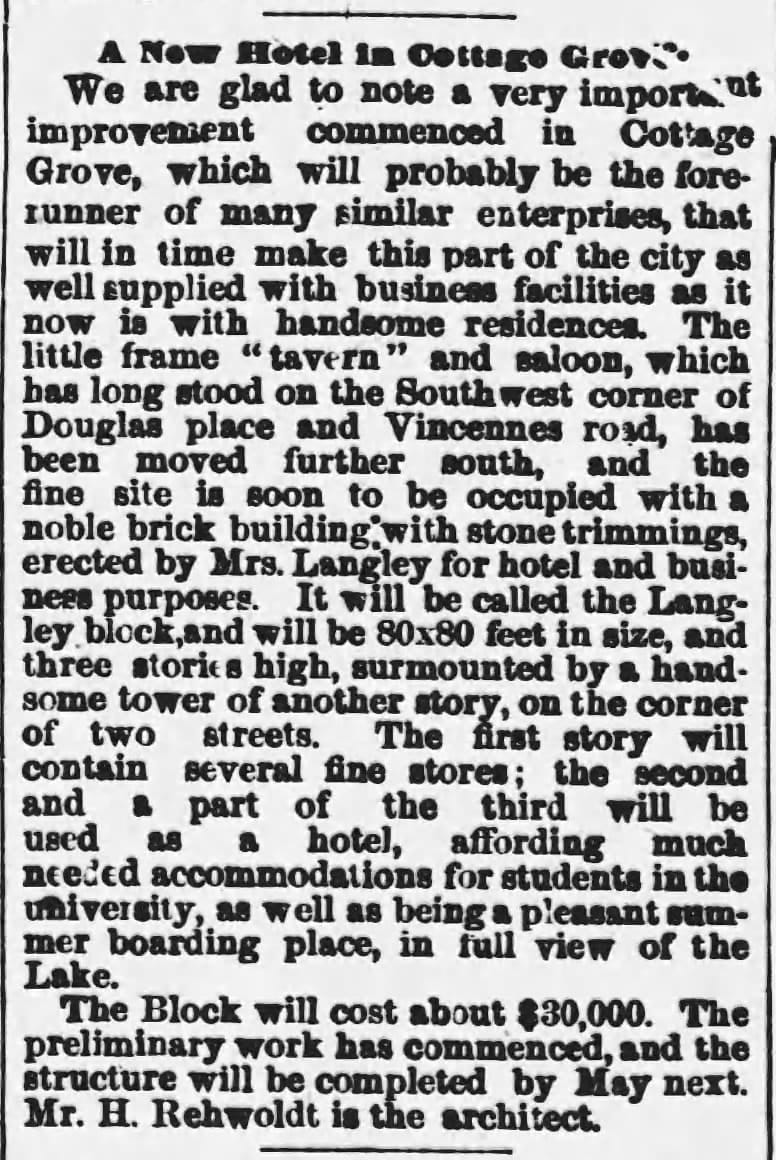
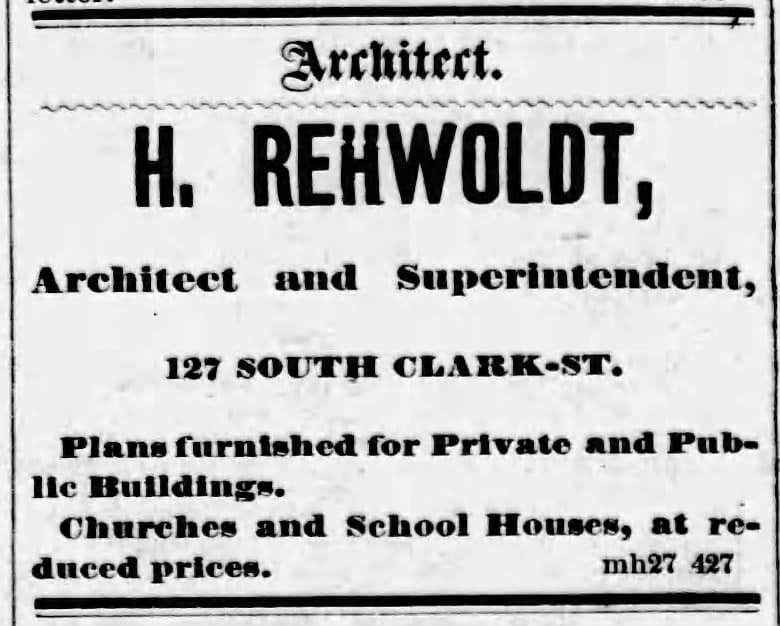
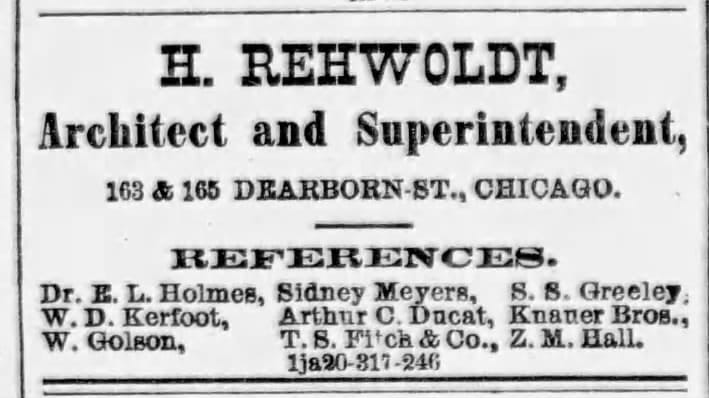
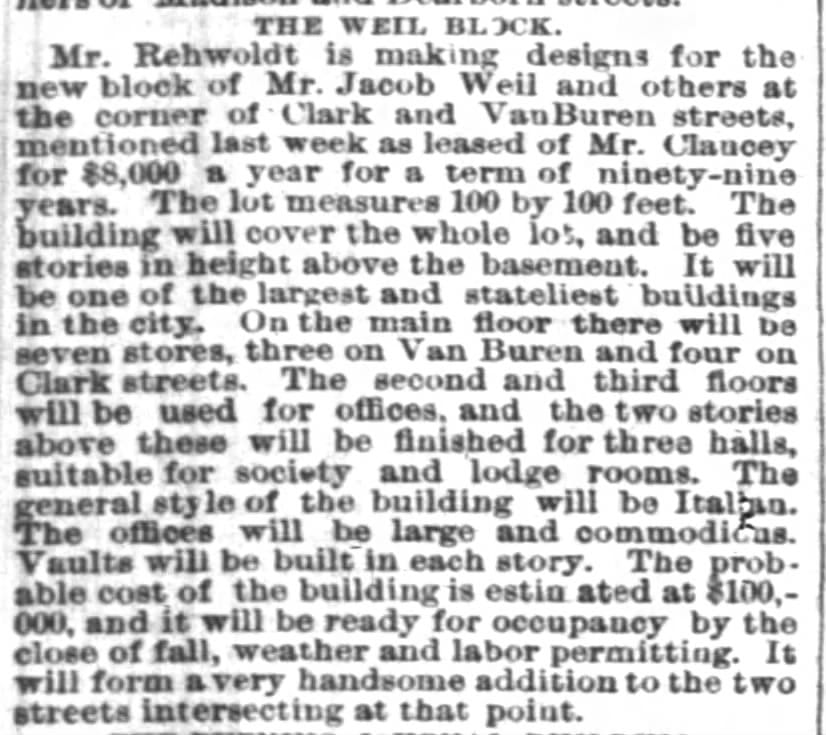
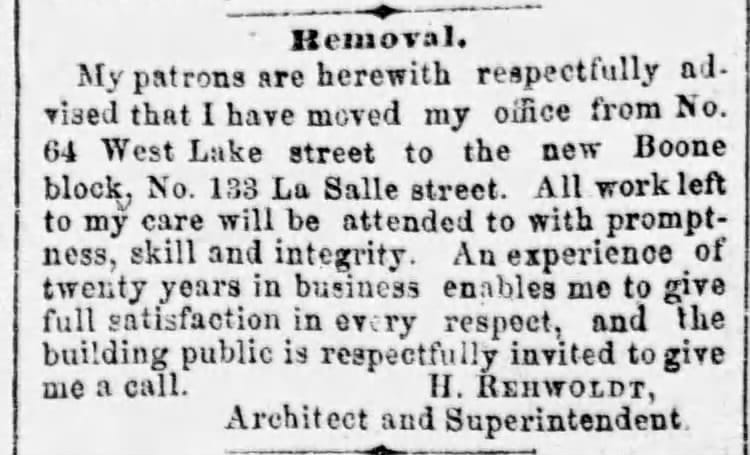
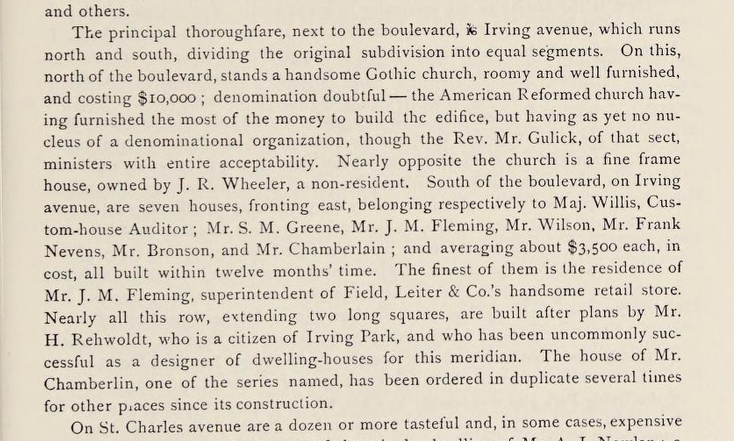
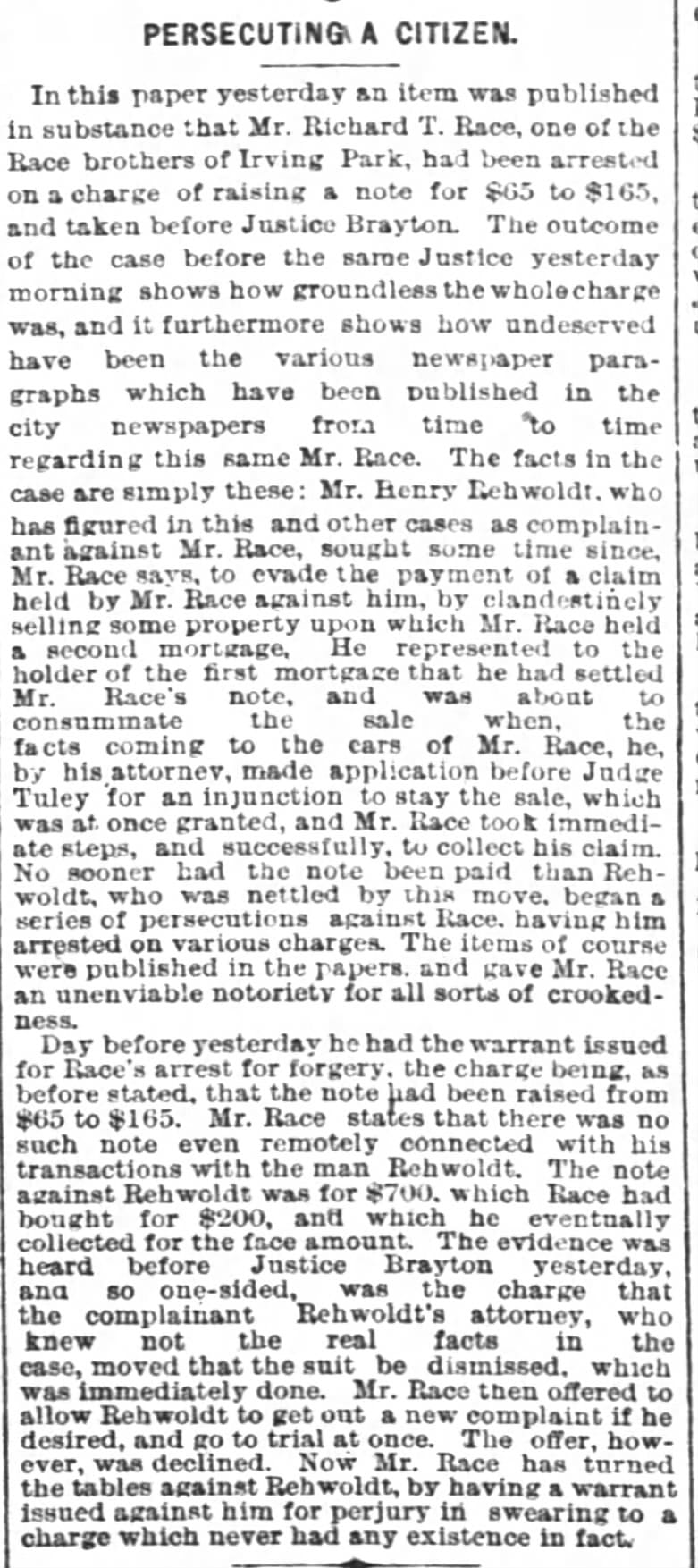
1867, Rehwoldt designs a hotel on the south side | 1867 and 1868 ads for Rehwoldt's firm | 1872, Rehwoldt designs the Weil Block at Clark & Van Buren (demolished) | 1872, Rehwoldt moves offices | Rehwoldt's Irving Park homes mentioned in an 1874 book about Chicago's suburbs | 1880, Rehwoldt and the Races trade lawsuits
Elmer C. Jensen may have been "the Dean of Chicago Architects" and his care for his firm's archives (he donated Jenney, Mundie & Jensen's papers to the Art Institute) was admirable...but I hate the house he designed for himself in Irving Park. What on earth is that portico?!
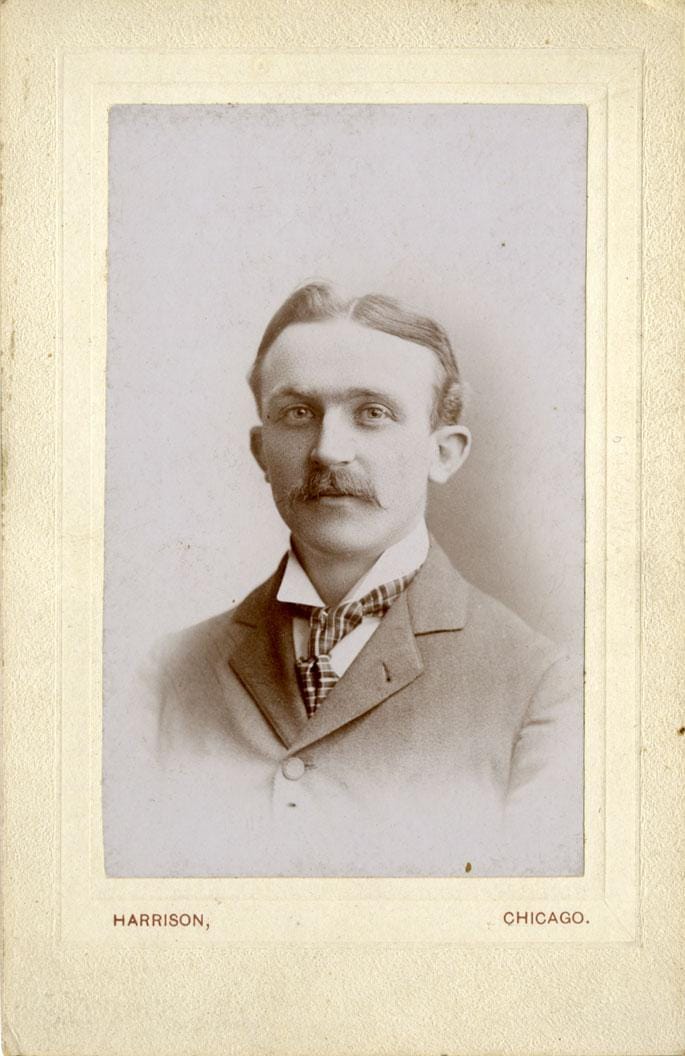
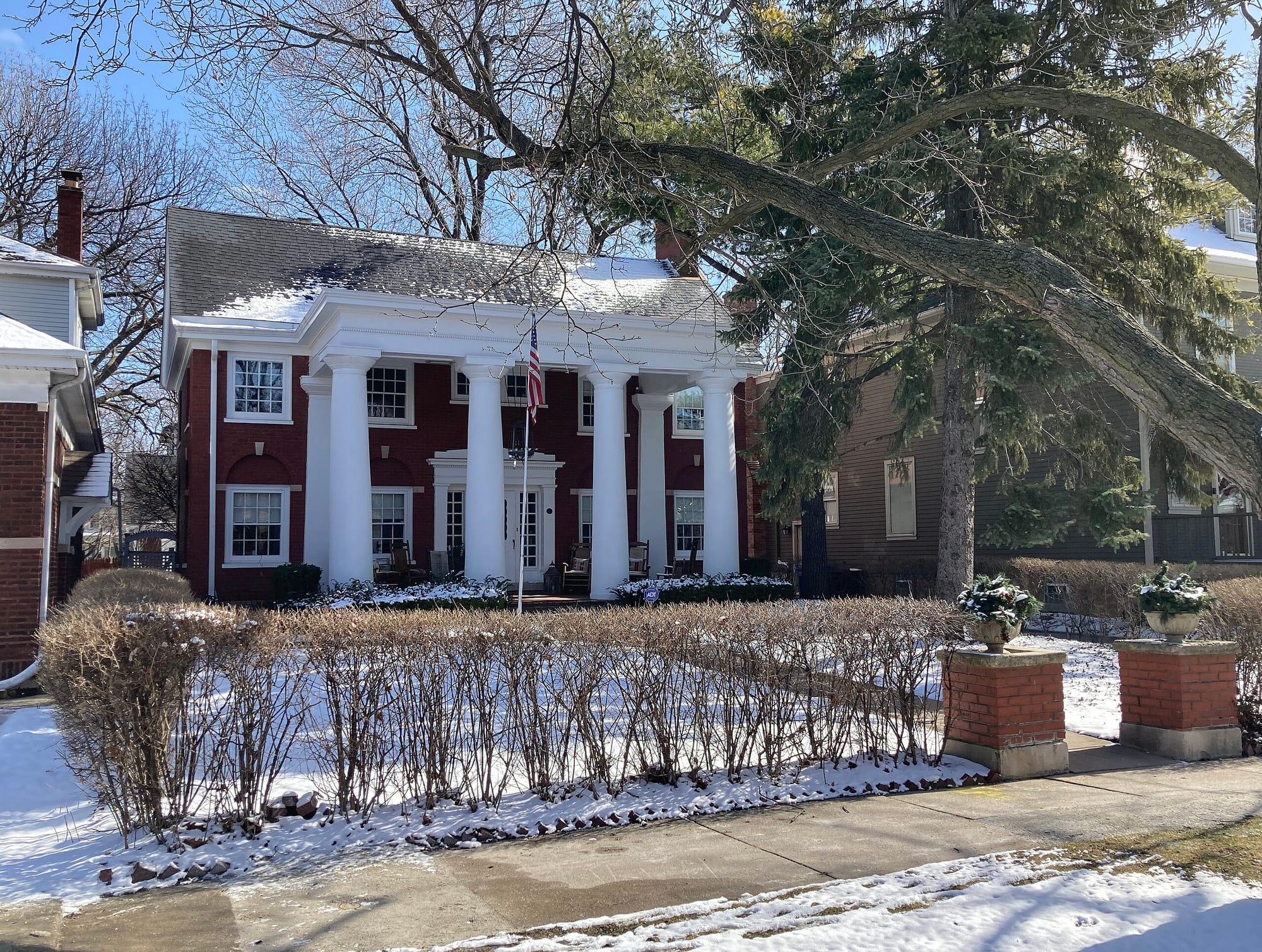
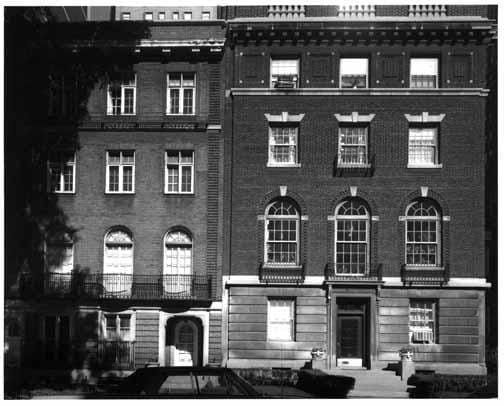
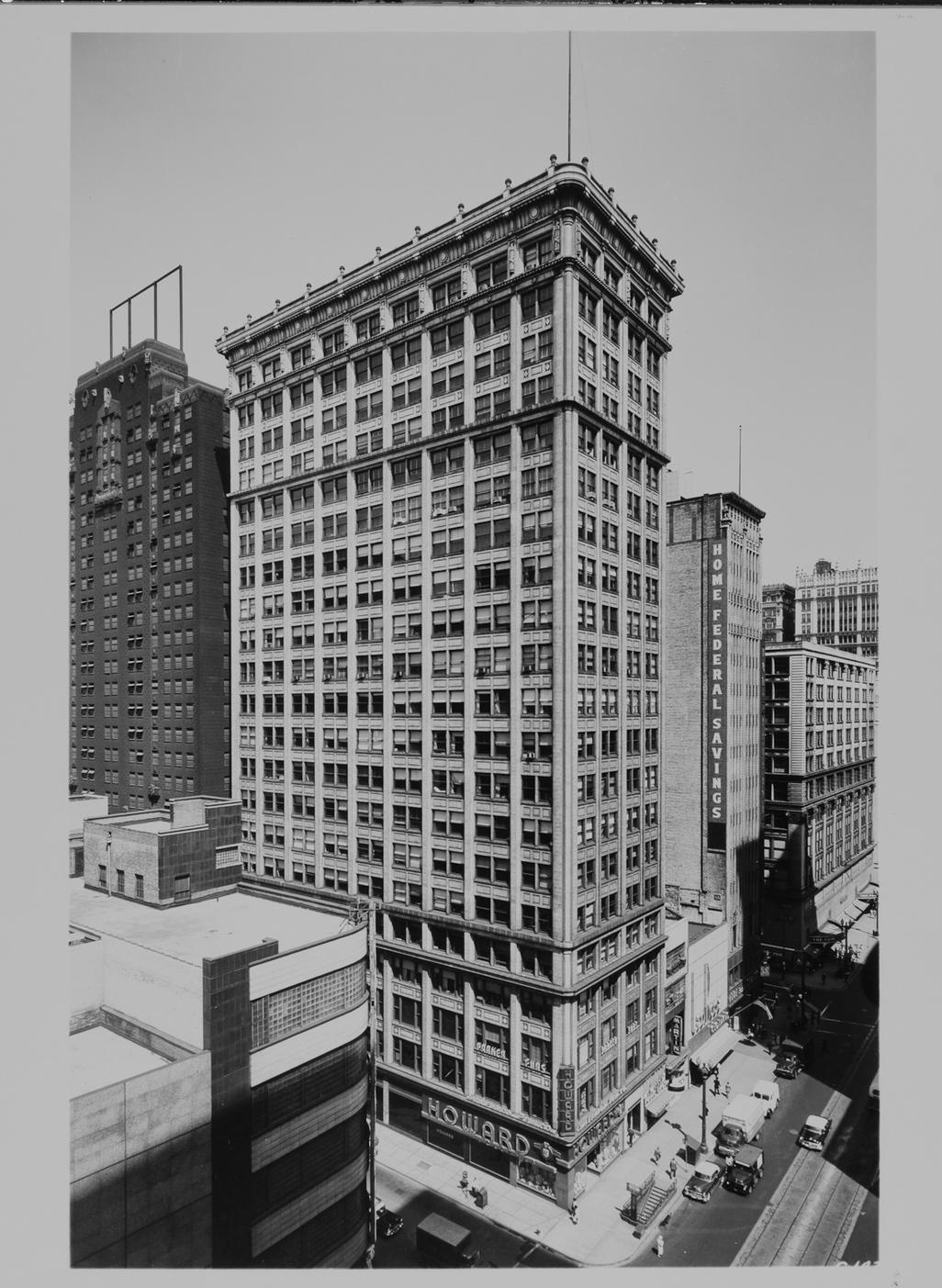
Portrait of Elmer C. Jensen, the Art Institute of Chicago via Chicago Collections | 2024 photo of the Elmer C. Jensen house in Irving Park, Nick Number, Wikimedia Commons | the Mundie & Jensen-designed home at 1505 N. Astor St, Barbara Crane, Art Institute of Chicago via Chicago Collections | the Mundie & Jensen-designed Consumers Building, UIC via Chicago Collections
A few Mundie & Jensen buildings are protected Chicago landmarks, including the Episcopal Church of the Advent in Logan Square (now apartments) and the West Town State Bank at Madison & Western.
For a while there, every ten years a church received an article in the newspaper.


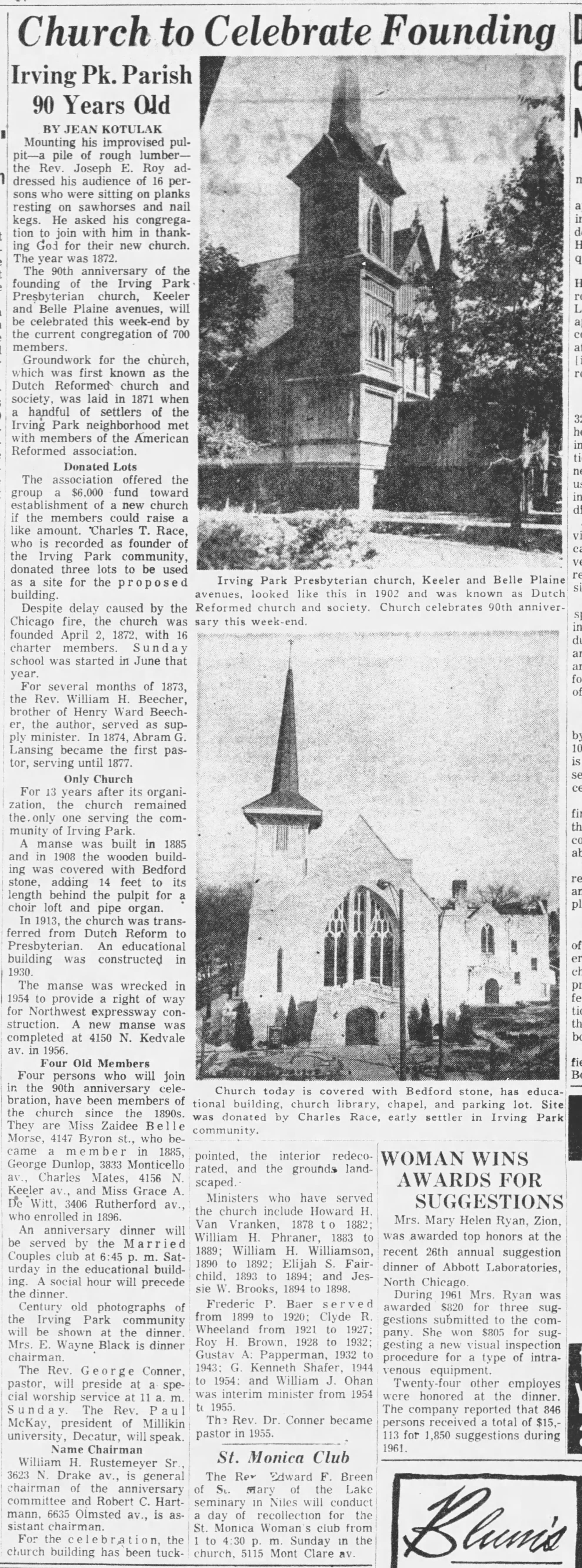
1942, 1952, and 1962 articles on the church's anniversary
Unsurprising for a Dutch Reformed congregation, the Irving Park Reformed Church did NOT like alcohol or revelry.
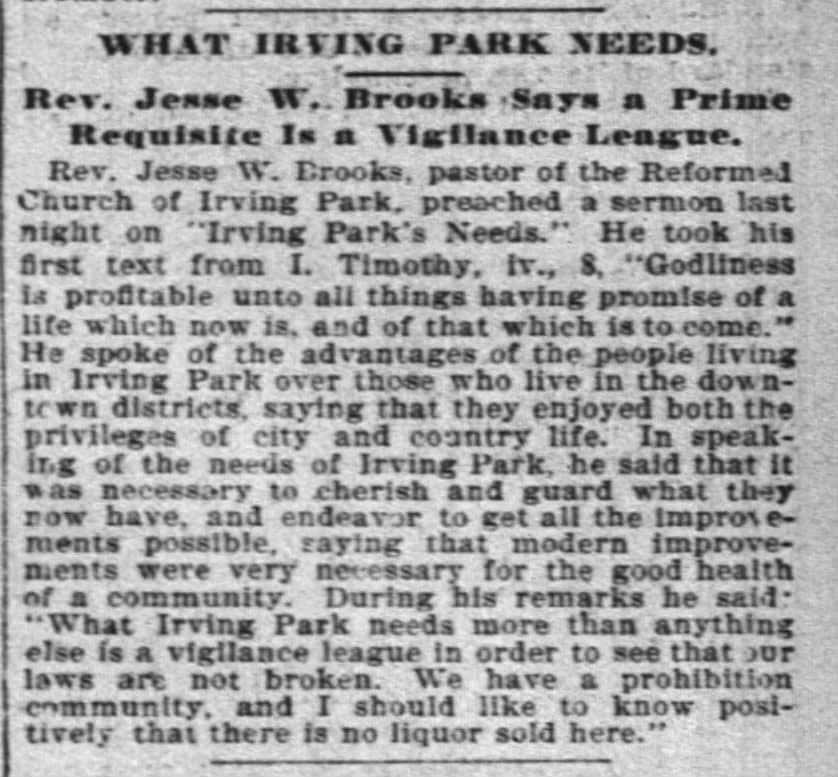
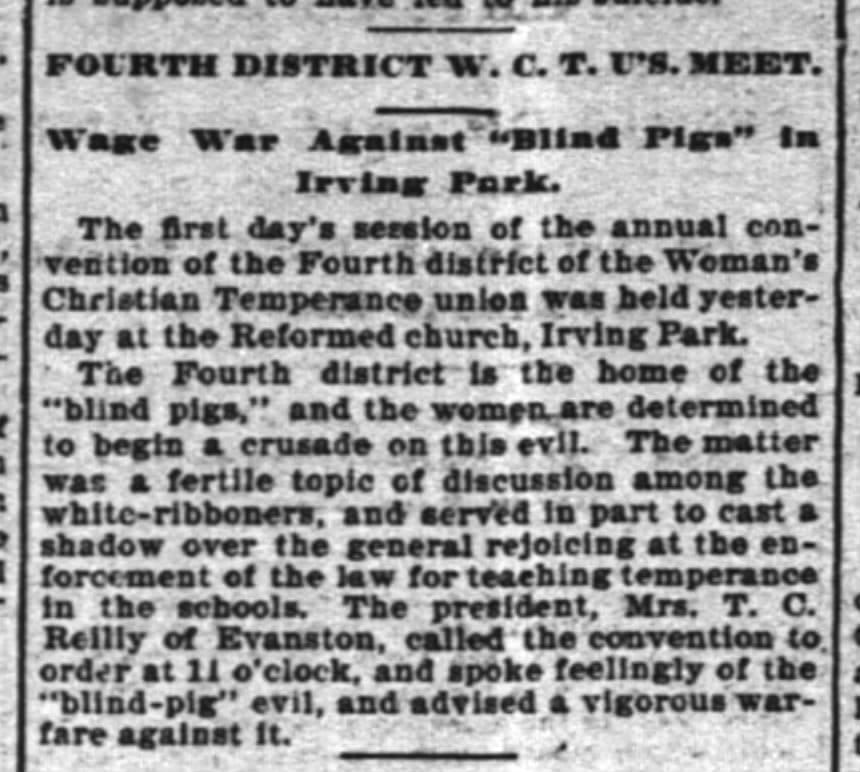
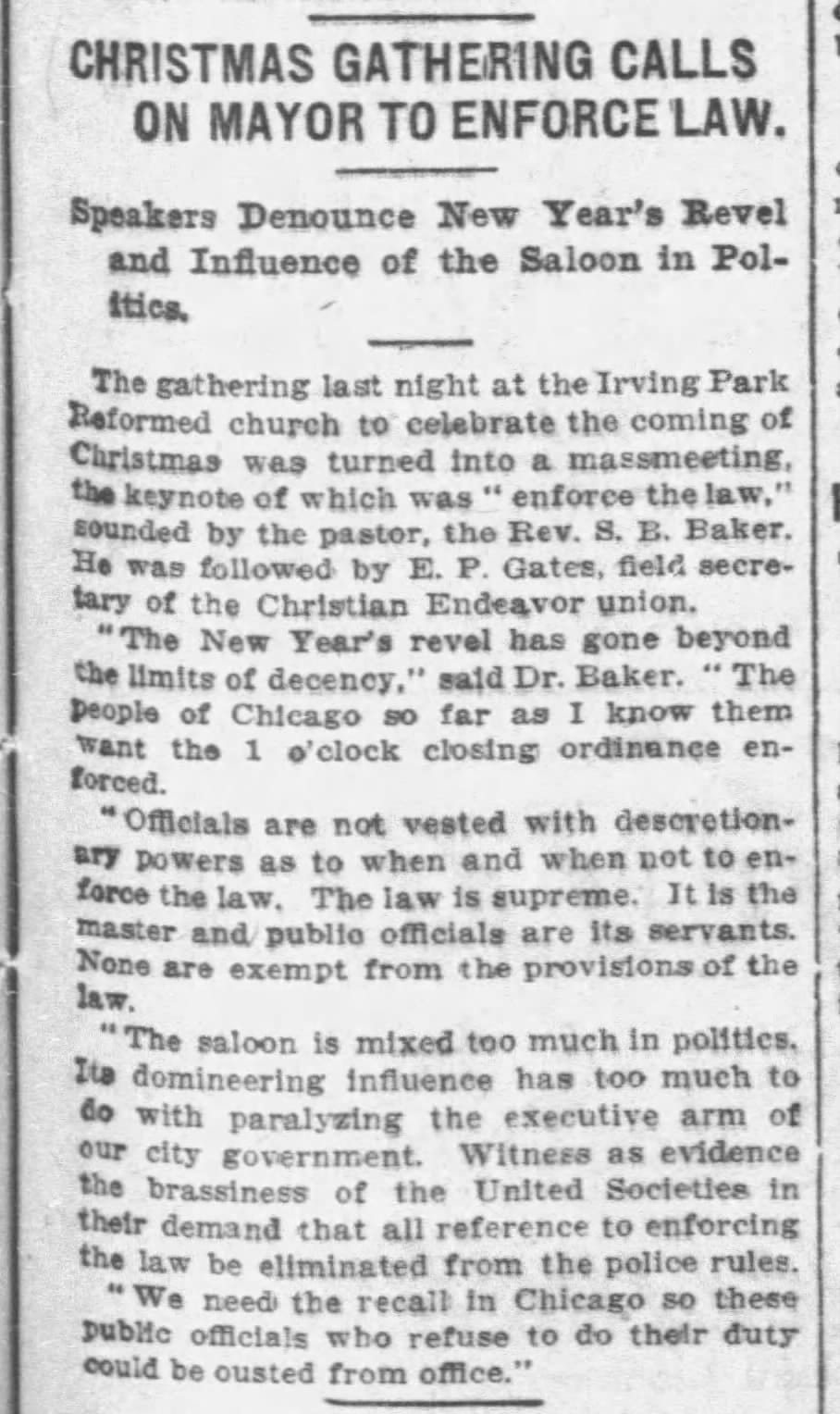
Irving Park Reformed Church pastor calls for a Vigilance League to fight alcohol, 1896 | Pastor rails against 'blind pigs', illicit bars in a dry community, 1897 | 1912, the church is displeased with vigorous Christmas revelry
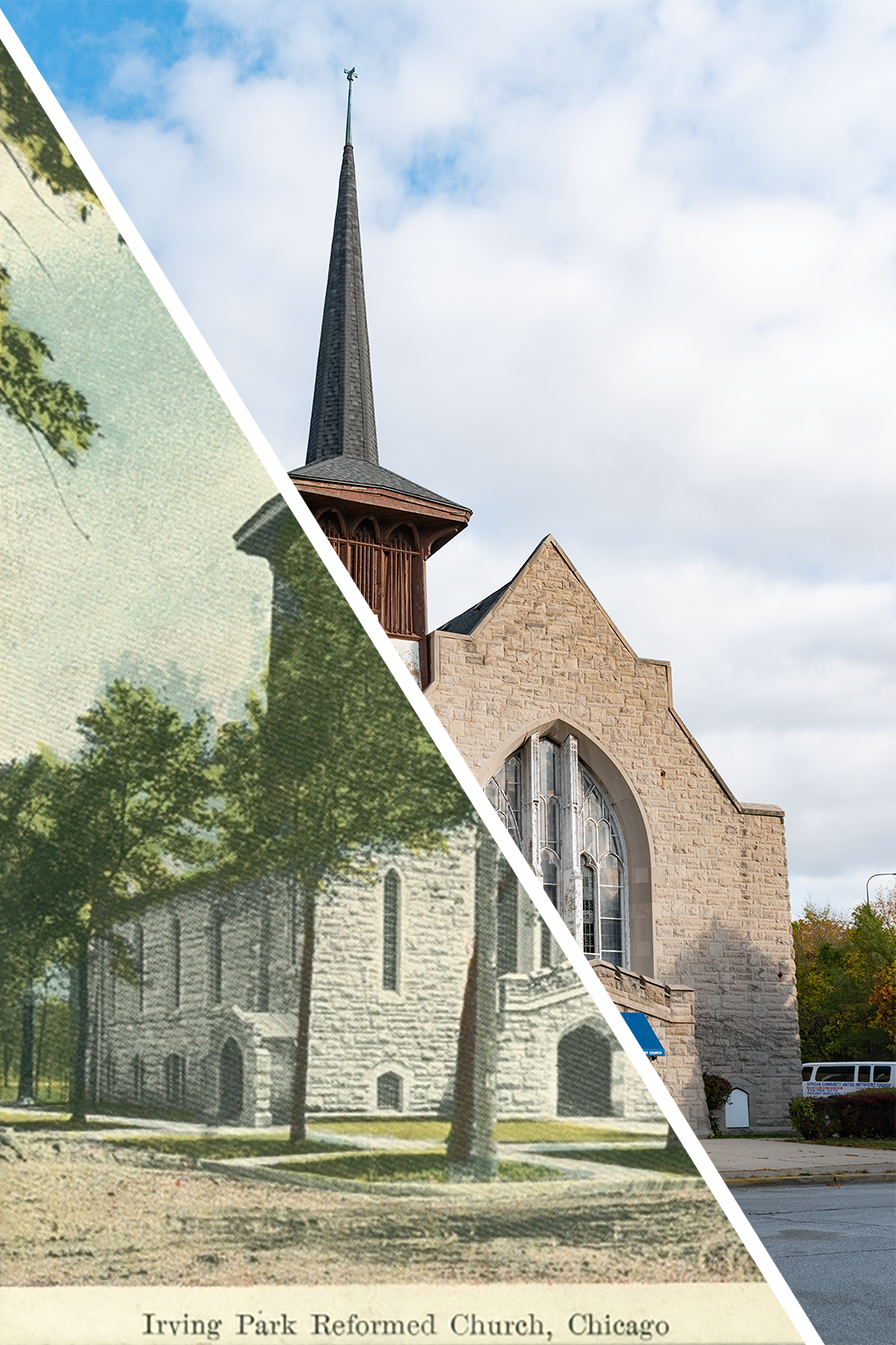
Member discussion: